Climate Change and Biotic Patterns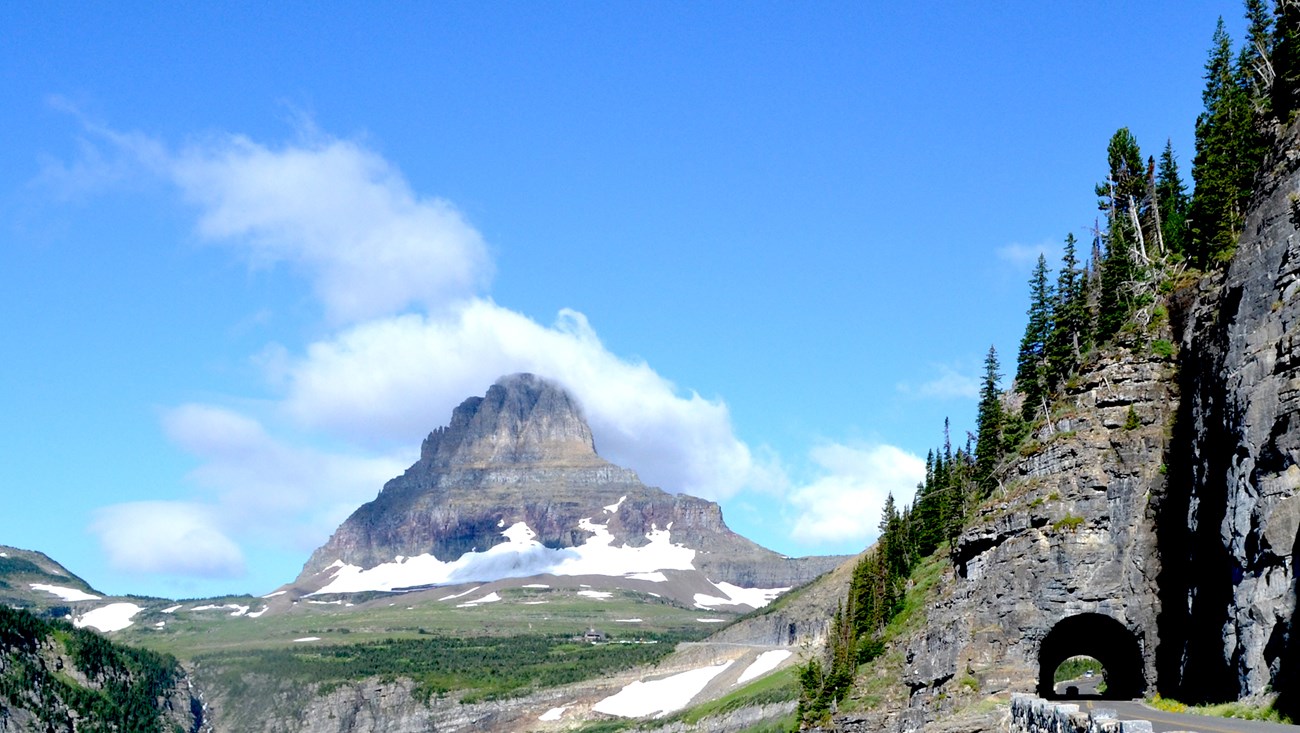
A Biologically Diverse Ecosystem
An Altered Landscape
Changes In Disturbance Regimes
Glacier’s Management Strategy
Global Climate Change and Melting Glaciers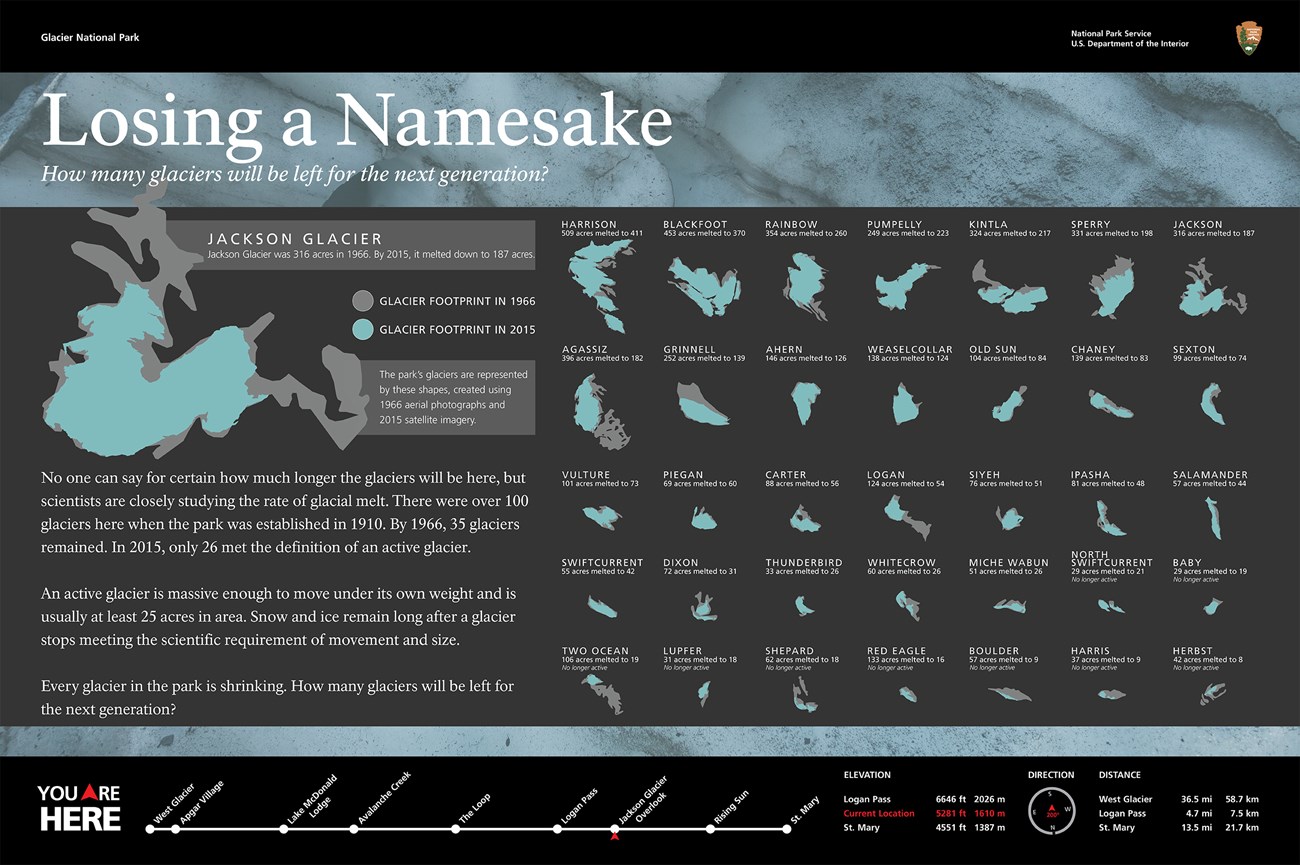
Global WarmingGlobal warming is one of the most pressing environmental issues of the 21st century. For many years, scientists have been studying this phenomenon and the evidence is now clear. Earth's climate is warming and mountain ecosystems like those found in Glacier National Park are seeing some of the most dramatic changes. In the last 100 years, global average temperature increased by 1.6 degrees Fahrenheit with accelerated warming over the last two to three decades. The 1990s were the hottest decade, not just of the last century, but of the last millennium! The 5 hottest years of record since the 1890s, in rank order, were 2005, 1998, 2002, 2003, and 2004. Scientists predict that by the end of the 21st century Earth will experience a warming trend of 2-10 degrees. While this may not seem like much, it could bring major changes to Earth’s ecosystems, especially those at high altitudes and latitudes like Glacier National Park. While Earth's climate is known to have changed in the past due to natural causes, the warming trend over the last few decades is primarily the result of human activities. Of major concern is the buildup of carbon dioxide and other “greenhouse gases” in the atmosphere. Greenhouse gases hold heat in the atmosphere that would otherwise radiate back out into space. While the greenhouse effect is what has made life on Earth possible, these gases are now increasing at an alarming rate. Since the beginning of the industrial revolution, the carbon dioxide concentration in the atmophere has increased by 30%. Human activities that release carbon dioxide are burning of fossil fuels, harvesting and burning trees, and land conversion to cities and agriculture. Melting Mountain GlaciersGlaciers are formed when more snow falls in winter than melts in summer. As snow accumulates over many seasons it becomes ice. The weight from snow and ice causes the bottom layers to move, fashioning a frozen river of snow and ice that slowly fl ows across the landscape, eroding and shaping it into unique landforms. When this process is reversed, the glaciers retreat back up the mountain. The advance and retreat of glaciers is strongly tied to temperature and precipitation and is a simple,but eff ective, way to monitor climate change. The amazing mountains and valleys of Glacier National Park were sculpted by the action of glaciers over hundreds of thousands of years of glacial advance and retreat. In 1850, at the end of the Little Ice Age, there were an estimated 150 glaciers in the park. By 1968, these had been reduced to around 50, 37 of which had been named. Today the number of glaciers in the park is 25, many of which are mere remnants of what they once were. Rapid retreat of mountain glaciers is not just happening in Glacier National Park, but is occuring worldwide. While Earth's climate has undergone cooling and warming cycles in the past, the rate and magnitude of change weare witnessing today has not occurred since human civilization began. If the current rate of warming persists, scientists predict the glaciers in Glacier National Park will be completely gone by the year 2030. The total loss of glaciers will certainly be a major change for Glacier National Park. For many people, the glaciers are one of the reasons the park holds special signifi cance and are a feature they expect to see when they visit. Glaciers are also an important natural resource, providing vital functions for the ecosystem. Glacier’s Management StrategyNow that the impacts of global warming are beginning to be understood, managers are taking the issue very seriously. Ultimately, greenhouse gas emissions, especially carbon dioxide, must be reduced. The National Park Service, in partnership with the Environmental Protection Agency, held a workshop in Whitefish, MT for park personnel in December 2003 to discuss the issues relating to climate change in the park and what steps the park can take to respond to this threat. The two-day workshop, Climate Friendly Parks: Moving From Knowledge to Action, was aimed at park staff , concessioners, andpark partners. An assessment of greenhouse gas emissions from Glacier was conducted prior to the workshop to provide background on what the primary activities are that can be targeted for emissions reduction. The single greatest contributor to carbon dioxide emissions in the park is transportation. Other significant sources are energy use in buildings and solid waste disposal. An important outcome of the workshop included organization of the Glacier Green Team. The Team meets quarterly to discuss issues relating to sustainable environmental practices in the park. Another outcome of the workshop was development of an action plan that outlines steps we can take toward sound environmental mamangent of our operations. Many of the ideas from the action plan have recently been integrated into Glacier's Environmental Management Plan, which was completed in May 2006. A number of the actions from the plan have already been taken to reduce greenhouse gas emissions and raise awareness of the issues. These include employee transportation alternatives like the Red Bike Program and bus and carpooling initiatives, as well as a recycling plan, and monitoring energy use in buildings. Visitor transportation options are also being planned in conjunction with the Going-to-the-Sun Road rehabilitation project. Climate Change and the Water Cycle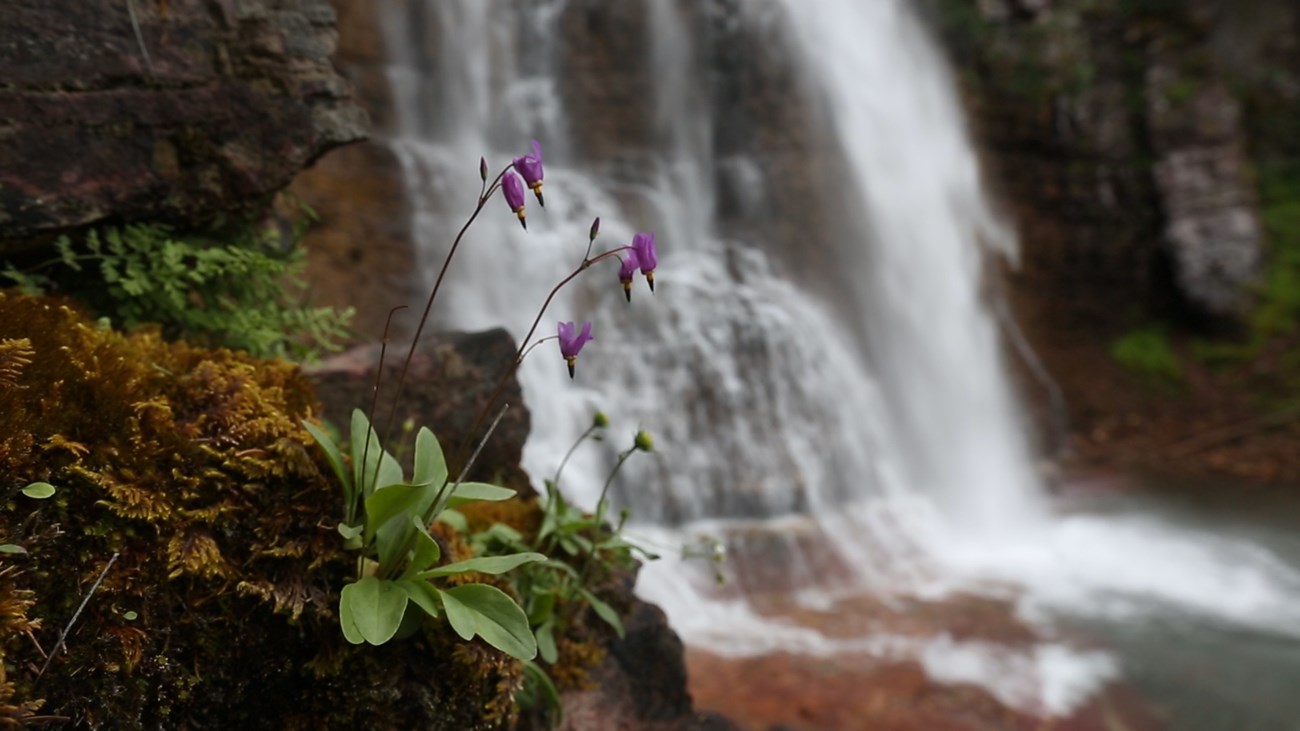
Water Towers of the WorldGlacier National Park is famous for its mountainous landscape and glacially carved terrain. What many people don’t realize is that mountain glaciers provide more than just scenery. Glaciers are an integral part of the ecosystem, providing water to mountain and downstream environments. In today's warming climate, these giant marvels of snow and ice are rapidly disappearing. Mountains have been called “water towers of the world.” More than 50% of the world’s fresh water supply comes from runoff in mountain environments. While much of the runoff from mountains comes from rain and melting snow, alpine glaciers are an important contributor to mountain stream flow. Globally, glacial meltwater provides one-fourth of the water in mountain streams. By providing a dependable source of cool, fresh water, glaciers are essential to the health of aquatic and riparian ecosystems. They also provide fresh drinking water for downstream populations and dilute pollutants that are generated mostly in lowland areas. As climate warms and glaciers melt, these ecosystems are losing an important source of fresh water. Glacier National Park has already lost more than 70% of its glaciers in the last century. Today there are 26 of the 150 glaciers that were recorded in 1850, the end of the period called the Little Ice Age. At the present rate of warming, scientists predict that all of the glaciers in Glacier Park will be gone by the year 2030. The demise of glaciers will effect both the amount and timing of mountain stream flow. Stream RegulatorsMountain streams in Glacier National Park are fed by alpine glaciers and snowpack. In summer, once it becomes warm enough to melt the snowpack, a rush of water comes down the mountains from glaciers to join the streams and rivers. Then, for the rest of the warm season, mountain streams are augmented by a constant fl ow from melting glaciers. When rain is sparse, as in the late summer and during drought years, mountain glaciers may be the only source of base fl ow in some mountain streams. As climate warms, this pattern is changing. With a warming climate, less winter precipitation falls as snow but more of it falls as rain. Also, spring comes earlier. The longerwarm season will allow even more snow and ice to melt. Earlier, warmer summers mean spring runoff from mountains happens earlier in the year, and often in a bigger rush of water downstream. In the Pacifi c Northwest region, spring runoff is now happening up to two weeks earlier than it used to. A concern with global warming is the possibility of more spring fl oods due to the pulses of rain combined with melting snow and ice. As mountain glaciers melt and spring runoff happens earlier, there is less water later in the season. For many small mountain streams, melting glaciers provide the only source of base flow in late summer. With no glacial meltwater to augment them, some streams may become ephemeral, drying up late in the season. This will have major consequences for stream ecology. In addition to regulating stream fl ow, glacial meltwater aff ects the temperature of mountain streams and rivers. Many of the invertebrates that live in Glacier National Park’s waters are very temperature sensitive and can only live within a narrow temperature range. Because aquatic invertebrates are at the base of the food chain, putting them at risk threatens the entire stream ecosystem. Glacier’s Management StrategyChanges to the status of aquatic systems due to climate change is of great concern to Glacier Park managers. Park staff work closely with research scientists to monitor stream health. Healthy streams have been identified as a park “vital sign,” which means they are an important indicator of the overall integrity of Glacier’s ecosystems. Vital Signs monitoring is part a national program in the National Park Service to understand the state of natural resources and provide an early warning for park managers of changes in ecosystem health. Many natural resources in the National Park System are subjected to unfavorable impacts from a variety of sources, including climate change. Left unchecked, the very existence of many natural communities can be threatened. To help prevent the loss or impairment of such communities in approximately 270 parks nationwide, the NPS Inventory and Monitoring the Natural Resource Challenge in 1999. The principal functions of the I&M Program are the gathering of information about the resources and the development of techniques for monitoring the ecological communities in the National Park System. Ultimately, the inventory and monitoring of natural resources are integrated with park planning, operation and maintenance, visitor protection, and interpretation to sustain the preservation and protection of these resources. The I&M Program is designed to help parks preserve healthy parks by acquiring timely and accurate information about the condition of natural resources and monitoring any changes over time so that managers can act on that information with confidence. Fire and Birds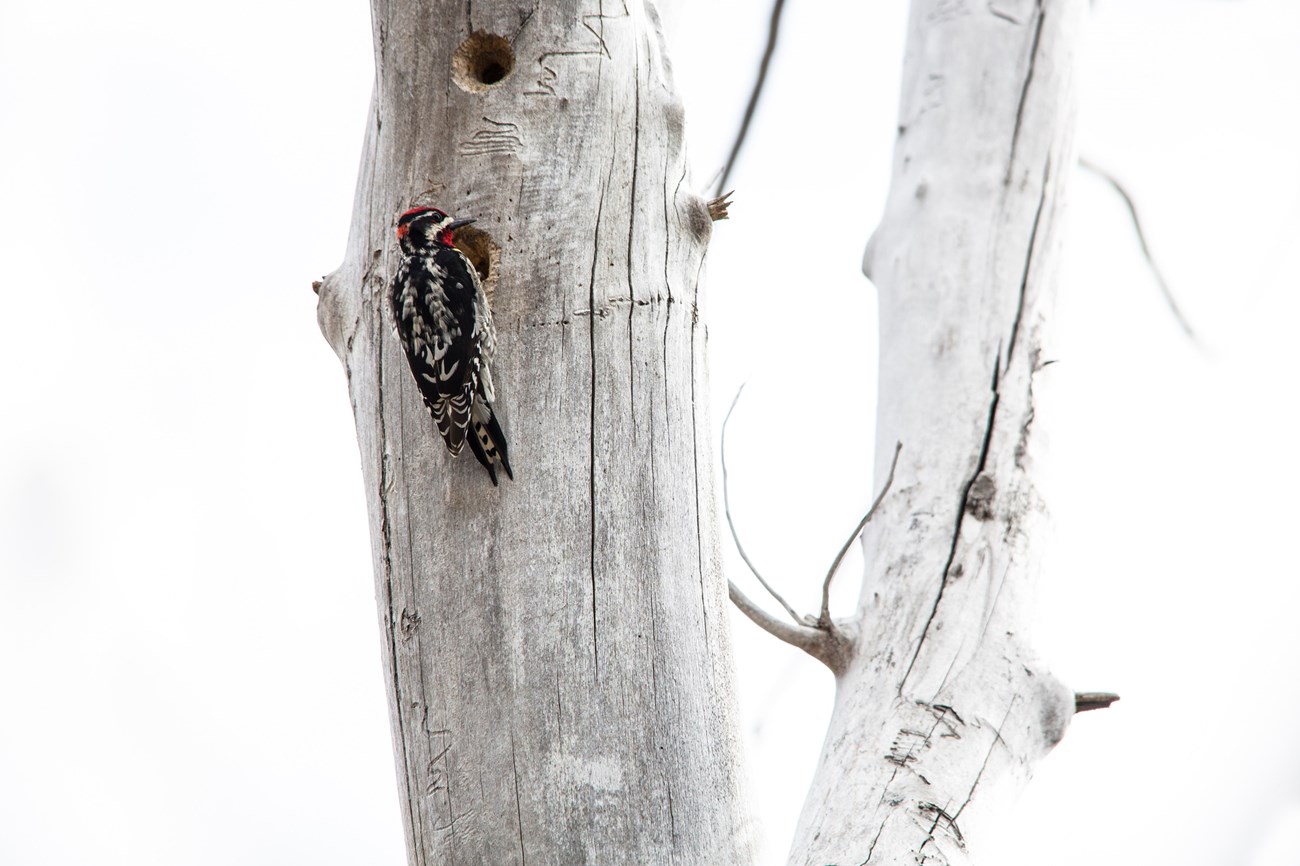
Burned Forests Provide Critical HabitatHistorically, prior to European settlement, fire was one of the most widespread, natural disturbances in the western United States. While the predominant fi re regime in low elevation forests and in grasslands in the Northern Rocky Mountains is frequent, low-severity, understory burns, the predominant fire regime in mid- to high-elevation forest types is one of infrequent, high-severity, stand-replacement fi res. Therefore, the origin of many forest stands in Glacier can be traced to standreplacement fires. In the Northern Rocky Mountains, over 80 bird species nest and forage in burned areas following stand-replacement fi re. Fifteen of these species are more abundant in early postfire communities than in any other major cover type. At least one species, the Black-backed Woodpecker, is nearly restricted to the standing dead forests created by stand-replacement fi res. The composition of bird communities in recently burned forests is diff erent than those in other Rocky Mountain cover types. Woodpeckers (Hairy, Three-toed, and Blackbacked), fl ycatchers (Olive-sided and Dusky and the Western Wood-Pewee), and seed eaters (Clark’s Nutcracker, Chipping Sparrow, and Pine Siskin) are especially abundant in these recently burned areas. Standing dead trees, known as snags, provide nest sites and foraging opportunities. Many cavity-nesting species nest in burned forests. Woodpeckers create their own cavities, whereas “secondary” cavity nesters, such as Mountain Bluebird and Northern Hawk Owl, use old woodpecker holes or other natural cavities (for example, holes that are created where limbs break off ). Cavity-nesting species tend to nest disproportionately more often in broken-topped snags and deciduous trees (aspen and birch) than other choices in these burned forests. Not all burned forests are equally suitable for any particular species. Bird species favoring stand-replacement burned areas are less abundant in areas that were burned by understory fire. Further, it is likely that older, more mature forests with large trees and snags would be more favorable areas for cavitynesters post-fi re than young trees would be. Therefore, mature and old-growth forests not only provide habitat for some species of concern when they are green but for other species of concern after they burn. Bird SuccessionAfter a fi re, forest succession occurs: in early stages, dead trees, tree seedlings, shrubs, grasses, and forbs predominate; after 15 to 50 years, a young forest emerges; eventually, the young forest grows into a mature forest. Just as the dead trees are succeeded by a young forest and then an old one, succession is also seen with birds. How long a particular species is found in a burned area probably depends upon the availability of foraging and nesting resources. Black-backed Woodpecker, Mountain Bluebird, and Northern Hawk Owl are three of the species found primarily in the fi rst few years after burns. Other species have different responses. Lewis’s Woodpecker can be abundant in recent (2-4 years) and older (10-25 years) burns. Old-growth associated species, such as Winter Wrens, Goldencrowned Kinglets, and Townsend’s Warblers, return as the forest ages. The Black-backed Woodpecker is nearly dependent on high-severity, stand-replacing fires. They breed in severely burned areas for approximately the fi rst 5 years after the burn. After that, they seek other recently burned forests to nest in. These medium-sized woodpeckers have solid black backs that make them hard to detect when they are foraging on the charred bark of the dead trees, searching for the larvae of wood-boring beetles, engraver beetles, and mountain pine beetles. Mountain Bluebirds are numerous in new burns, especially after high-severity, stand-replacing fi res, but decline in mid-successional stages. Bluebirds often perch on dead trees and fly to the ground, to vegetation, or into the air to capture insects. They prefer to hunt in short vegetation or bare areas, places where the vegetation is shorter than their legs. The Northern Hawk Owl is an uncommon species that has nested in recently burned forests in Glacier National Park, with the first documented nesting in 1994 (a state record). Before then, they had rarely been found in Montana. The Northern Hawk Owl, a boreal species, nests in woodpecker holes or other natural cavities in dead or dying portions of trees. With some behaviors that are similar to those of hawks, their fl ight is rapid, strong, maneuverable, and often low to the ground. From perches, this owl swoops down on prey, primarily small mammals, especially voles. Glacier’s Management StrategyIn general, in the western United States, 80 years of fire suppression and silvicultural practices have altered fi re regimes in many habitat types. However, the forests in Glacier, especially those on the west side of the park, have been less aff ected by fi re suppression activities than forests elsewhere. Because mostforests in Glacier have long fi re-return intervals, most forests are within natural fi re return intervals. Further, the natural role of fi re has been allowed to return through the annually updated Fire Management Plan which allows for the ecological process of fi re through “Appropriate Management Response” of all fires. The diversity of the landscape is now perpetuated by a more natural history of wildland fires, enabling diff erent stages of succession and habitat diversifi cation. These burned areas off er an outdoor laboratory for burned area research. It is from this research we may learn how much connectivity among burned patches is required for the survival of certain species. Habitat for many species of fi re-dependent or fi re-associated birds has greatly expanded in recent years, and monitoring eff orts are underway to quantify and further clarify the benefi ts of fire. Without periodic stand-replacing fi res within the detection distance for these species, these benefits could be transitory. Fire and Invasive Species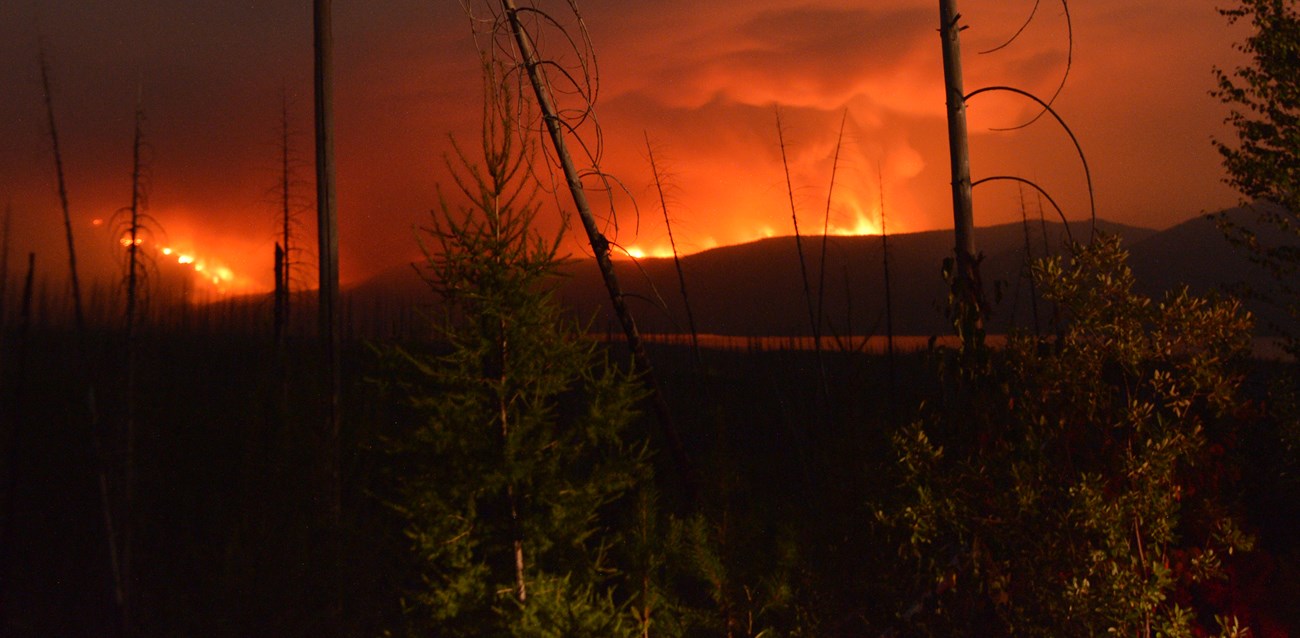
Taking Advantag of DisturbanceWildland fire is a natural process that often rejuvenates native plant communities. How-ever, a downside can be the invasion of exotic plants. These invasive weeds are non-native plant species that reproduce quickly and are so aggressive that they can displace native plants, even in intact native communities. The spread of invasives after a fire is a major concern for park botanists and fire managers. Disturbance creates an ideal environment for invasive plants for several reasons. The most obvious is that they have less competition. Fire impacts the native plants, which are often slower to regenerate after a fire than the non-natives. The intruders are opportunistic species that can often grow faster and out compete the native plants of an area. In addition, since none of the natural predators, pathogens, or diseases of an invasive is likely to be present in its new environment, it does not have the stresses that native plants have while trying to become re-established. Fire often releases nutrients into the soil that encourages new plant growth. This “energy boost” favors species that respond most quickly. Also, many invasive weeds increase seed production after a fire. Some weeds reproduce from their roots. If the deep roots of weed species were already present before a fire and are undamaged, the plants will begin to grow again almost immediately, without even the need for seed production. Some species can resprout, flower, and set seeds within 6 weeks of a fire, while most native vegetation is dormant and does not produce seed until the following season. If invasive weeds manage to become established before the native plants of an area have a chance to grow, they can take over the entire area. The more estab-lished weeds are allowed to become, the more diffi cult they are to get rid of at a later date. Fire Fighting CarriersWhile invasives already have several ad-vantages over native plants after a fire, their advantage can be compounded by the firefi ghters themselves. Often, fires take place in areas previously uncontaminated by invasive weeds. However, fire fi ghters can bring seeds from invasive plants into these areas on their clothing, boots, vehicles, and equipment. The newly burned area is perfectly primed to receive these seeds. When fires occur in places that already had a population of invasive weeds, there is most likely a viable seed bed. In this case, invasives may take over after a fire despite the eff orts of even the most conscientious fire team. Depending on the type of equipment a fire fighting team uses, the risk of bringing in invasive plant seeds can be large or small. There are also methods of decontaminating equipment and people before they enter and after they leave a burn site. Glacier National Park employs methods to decontaminate equipment used during a fire and limits the kinds of equipment used by fire teams to reduce the risk of invasive weed infestations. Although fire crews most likely do not have invasive weeds first in their minds, a careful crew can drastically reduce the spread of weeds after a fire. Glacier’s Management StrategyThere are many diff erent strategies available to combat invasives after fires. Some advocate a great deal of interference in the natural regen-eration of the area, by reintroducing native plants and other methods. Glacier National Park, following a general strategy of nonin-terference, does not use such a policy if at all possible. Often, if kept as clear as possible of invasive plant seeds, a recently burned area will begin to regenerate on its own, and native plants will become reestablished. However, if there is an infestation of weeds, appropriate measures must be taken. Fires also allow an unusual opportunity for control of invasive weeds. Since the ground is relatively bare and weeds usually begin to sprout faster than native plants, they can be easily controlled without as much concern for impacting natives. If there is an infestation, the weeds can be removed at an early stage by hand pulling or with the use of herbicides if there is a large infestation. Monitoring of recently burned areas is a very important step in weed control. Monitoring takes place in areas where noxious weed infestations occurred before a fire and where fire suppression activi-ties took place. Prevention is considered the most impor-tant and most eff ective method of stopping the spread of invasive plants in the park. By attempting to prevent seeds from being introduced into new areas and quickly managing any infestations that do arise, the much greater difficulty of attempting to remove large populations of invasive plants is avoided. While the task is still daunting, the spread of invasive weeds in the park is held back, even with sometimes frequent wildland fires. Fire EcologyCyclic DisturbanceFire is often thought of as a catastrophic event. In actuality, the occurrence of fire in a wildland setting is an essential part of the natural cycle. Many North American ecosystems evolved under the influence of fire. In fact, fire is the most prevalent natural disturbance mechanism in the Northern Rockies, where fires have been occurring for thousands of years. Fire ecology describes the important role that fire plays in plant and animal communities. Fire’s natural cycles maintain and restore a wide diversity of conditions needed by various flora and fauna. Over time, certain fire adapted species and fire-dependent relationships develop. A fire-adapted ecosystem is one in which flora and fauna have developed adaptations to help them survive periodic fires. An example is ponderosa pine, which has very thick bark that protects it from low intensity fires. A fire-dependent species is one that has adapted to fire so much that it requires fire to complete an essential part of its life cycle. As an example, some of the cones of the lodgepole pine are serotinous, requiring heat from fire to open and drop their seeds.Renewal by FireIt is not difficult to see that fire changes an ecosystem. While some species are absent after a fire, many others are regenerated and become more plentiful. Fires perform not just one, but many different functions, because any given change has far-reaching effects throughout the rest of the system. Fires effect plants which impact herbivores and then carnivores. One major effect is that a fire clears out a great deal of vegetation, leaving behind vegetation that is burned or partially burned. On the surface this can appear to be a loss, but it actually provides new habitat by opening up space for young and different plants to grow. Fire also opens up the canopy so more sunlight reaches the forest floor. In addition, some plants thrive in the nutrient-filled, ashy soil. For example, western larch (pictured below) can become established rapidly on mineral soil exposed by fire. Larch also responds to the space created by fire as it requires full sun or nearly full sun for best development. Wildland fires play a major role in forest succession in the Northern Rocky Mountains. The distribution of lodgepole pine, ponderosa pine, western larch, western white pine, and whitebark pine (all pictured below) are the result of past fires. For example, without fire, Douglas-fir (pictured below) would dominate areas where ponderosa pine (pictured below) now occurs. Periodic fire also allows western larch and western white pine to persist on many sites. Fire is critically important for some species with limited ranges. In subalpine forests, the perpetuation of whitebark pine depends upon occasional disturbances, especially fire. Without fire, forest succession would lead to dominance by subalpine fir and spruce. Relative fire resistance varies among tree species found in the Northern Rockies. Because of its thick bark, deep roots, very little resin in old bark, very open branches, and foliage that has low flammability, western larch is the tree species that is the most resistant to fire. Ponderosa pine and Douglas-fir share many of these characteristics and are also very resistant to fire. Engelmann spruce, western hemlock, and subalpine fir are the least resistant to fire. The response of understory plants to fire also varies. Nearly all native forest shrubs are capable of surviving fires. A majority of forest herbaceous species, especially those with underground stems or root crowns, survive fires, too. These survivors regrow from surviving plant parts after fire. Herbaceous plants that do not survive must re-colonize from adjacent unburned areas. In fact, the more severe the disturbance, the more favorable the site for colonizers. Many times, when a fire moves through an area, not all of the existing vegetation is burned. The result is a mosaic pattern of burned and unburned patches across the landscape which results in a mixed diversity of species, some not present before the fire. A forest that has a mosaic pattern of growth can support a wider variety of animal species than a homogeneous forest. Young plants growing in recently burned areas provide food for many animals. Many shrubs, including huckleberry, are rejuvenated by fire, and are a food source for a variety of animals, including deer, moose, bears, and birds. Insects invade standing dead trees after a fire. Many of these insects are eaten by birds, such as Black-backed, Three-toed, and Hairy Woodpeckers. Dead trees, or snags, also provide sites for denning, roosting, and nesting by various species. Glacier’s Management StrategyIn Glacier National Park, the Fire Management Plan takes into account the known fire ecology, fire history, and fire behavior of the region. While many fires must be suppressed to avoid endangering people and structures, fires that can be managed with minimal suppression activity are allowed to burn, within certain parameters, for the benefit of the resource. Glacier’s managers and researchers have studied the park’s fire history and the expected fire return intervals for different areas of the park. Knowing how often a certain kind of habitat has burned in the past gives managers insight into when another fire is likely. Now that the value of fire is realized, if an area is overdue for a fire, a prescribed burn may be started to help perpetuate a vegetative cover type (e.g., ponderosa pine). Prescribed burns can also reduce the buildup of fuel that could cause a natural fire later on to be more severe than it would have been historically. The hope is that these policies, based on sound ecological research, will guide fire managers to perpetuate diverse and dynamic landscapes. Westen Larch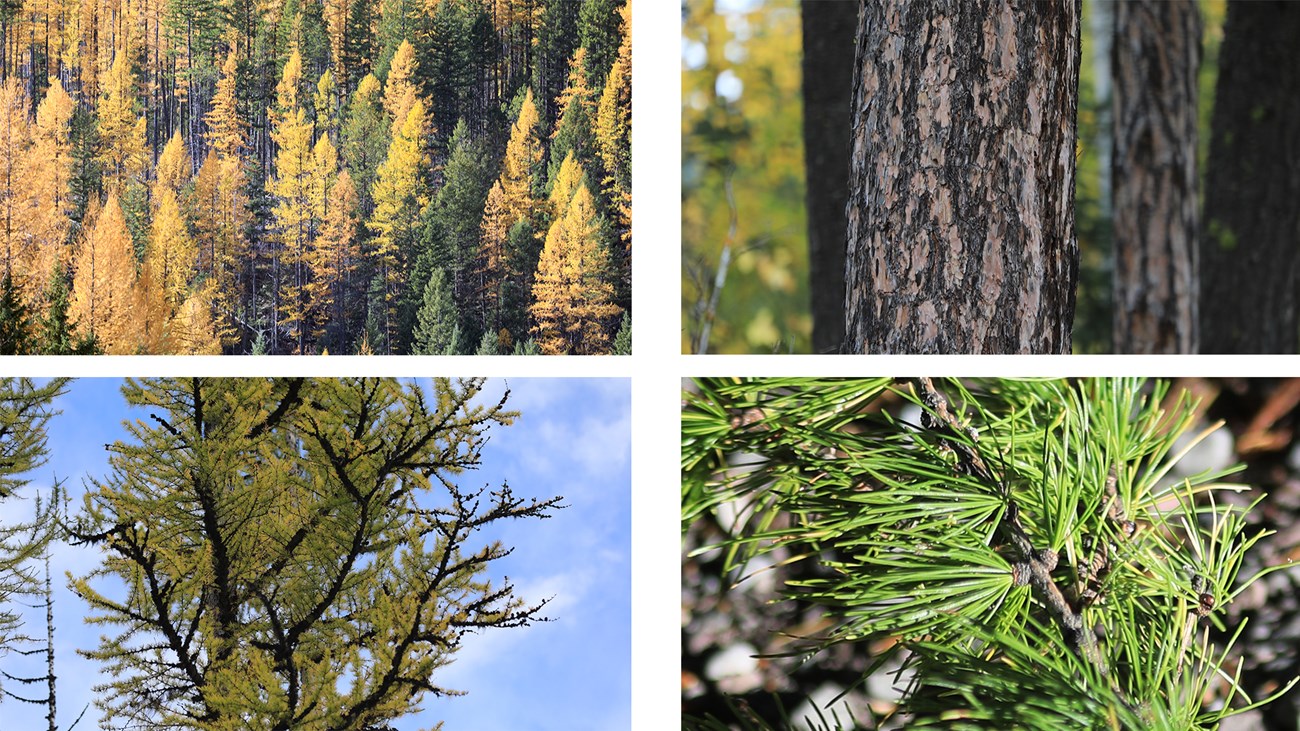
Matt Osborn/NPS Ponderosa Pine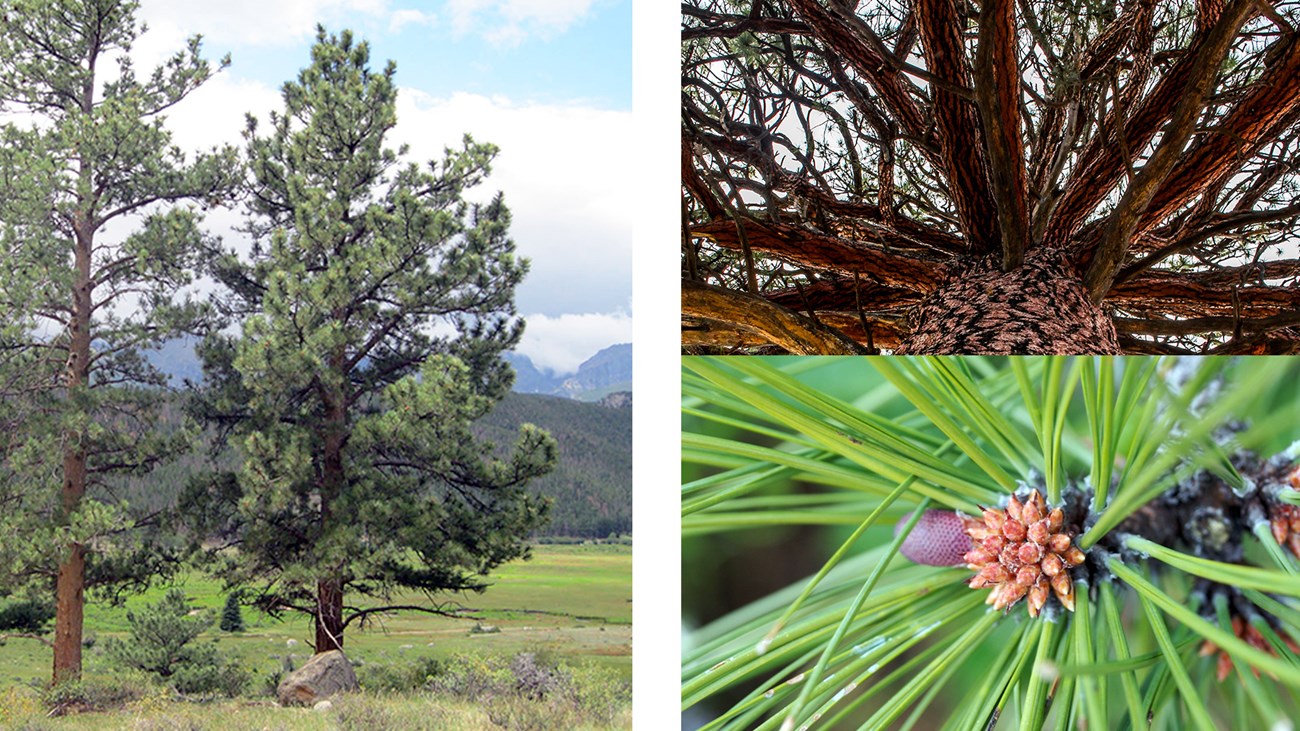
NPS photos Engelmann Spruce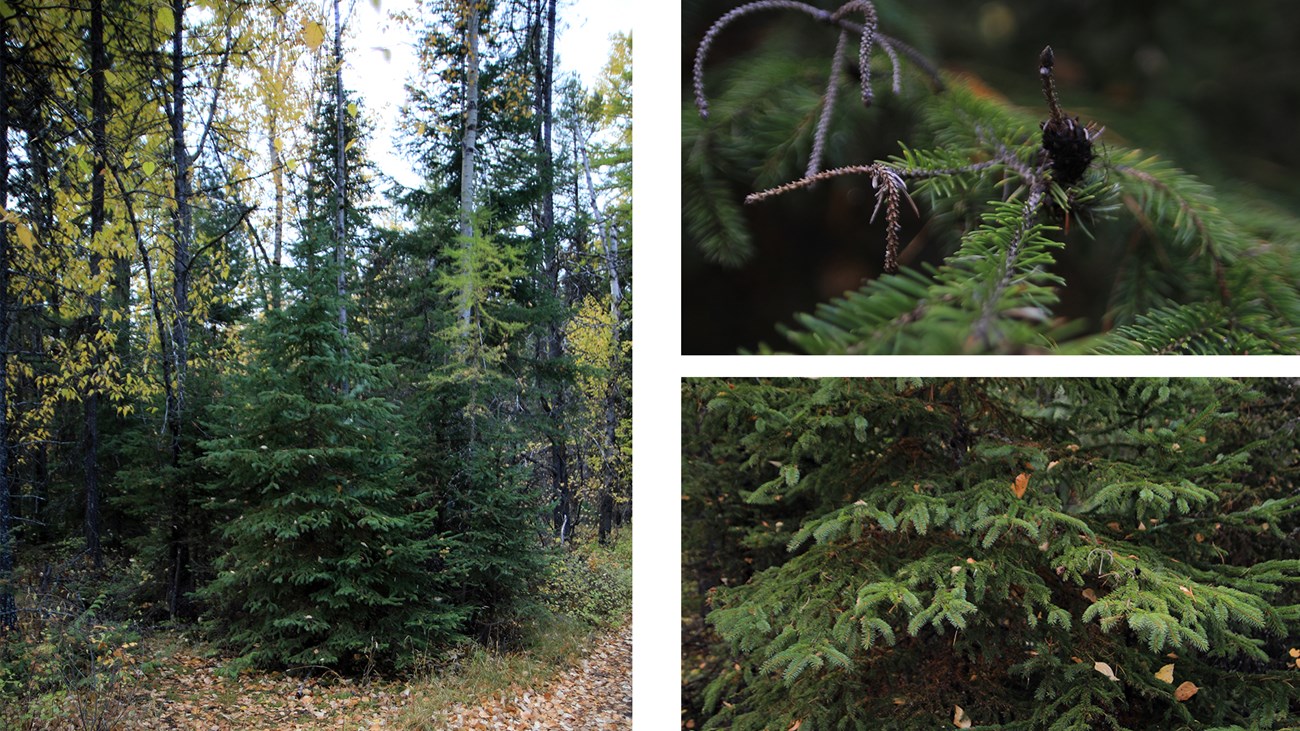
Matt Osborn/NPS Lodgepole Pine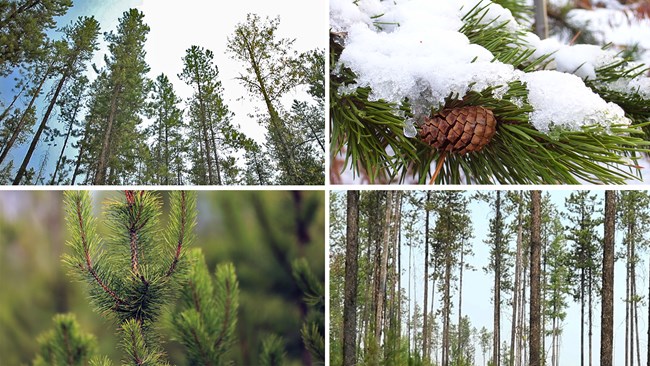
|
Last updated: June 7, 2018
